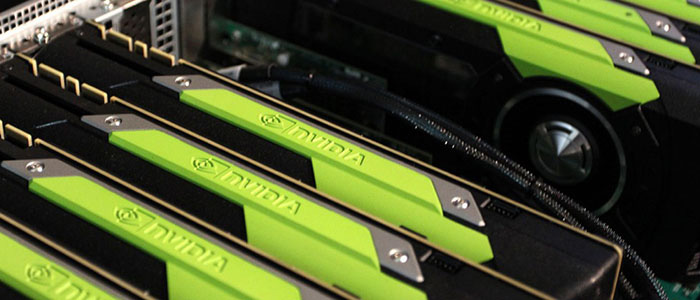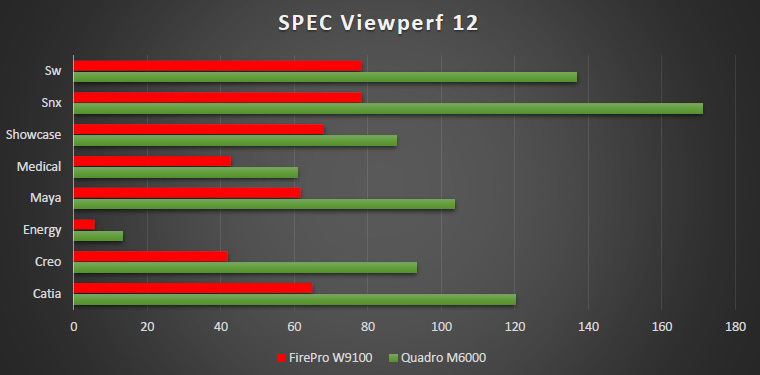Our Aim
To provide you with an overview on New And existing technologies, hopefully helping you understand the changes in the technology. Together with the overviews we hope to bring topical issues to light from a series of independent reviewers saving you the time And hassle of fact finding over the web.
We will over time provide you with quality content which you can browse and subscribe to at your leisure.
TekSpek 's

NVIDIA PNY Quadro M6000
Date issued:

Nvidia is more commonly known as the designer of graphics chips that power the majority of add-in PC gaming cards. Referred to as the GeForce range and available from anywhere between £30 and £850, Nvidia GeForces offer unparalleled performance and energy efficiency.
The core GPU technology is also an excellent fit for workstation-class users who need to accelerate computer-aided design and digital content creation programs as well as scientific applications. Popular programs such as AutoCAD, AutoDesk, SolidWorks, CINEMA4D, and Adobe Content Creation, to name but a few, can all benefit from processing boosted by using Nvidia Quadro hardware.
These Quadro cards share the same underlying architecture as their desktop GeForce cousins, with the very latest models based on what is known as the Maxwell architecture. The desktop GeForce GTX Titan X, considered a full implementation of the Maxwell design, has proven to be the best consumer GPU on the market. Nvidia is taking this Titan X blueprint and, just a couple of days later, is releasing the Quadro equivalent known as M6000.
The following table highlights the key specifications of both the Quadro M6000 professional card and GeForce GTX Titan X consumer graphics card.
Specification
Nvidia Quadro M6000 (12GB) |
Nvidia GeForce GTX Titan X (12GB) |
|
|---|---|---|
| Launch date | 19 March 2015 |
17 March 2015 |
| Codename | GM200 |
GM200 |
| Process (nm) | 28 |
28 |
| Transistors (mn) | 8,000 |
8,000 |
| Approx Die Size (mm²) | 601 |
601 |
| Full implementation of die | Yes |
Yes |
| SM Units | 24 |
24 |
| Processors | 3,072 |
3,072 |
| Texture Units | 192 |
192 |
| ROP Units | 96 |
96 |
| Peak GPU Clock/Boost (MHz) | 1,076 |
1,076 |
| Peak GFLOPS (SP) | 6,611 |
6,611 |
| Peak GFLOPS (DP) | 207 |
207 |
| Memory Clock (MHz) | 6,600 |
7,012 |
| Memory Bus (bits) | 384 |
384 |
| Max bandwidth (GB/s) | 317 |
336 |
| Default memory size (MB) | 12,288 |
12,288 |
| Power Connectors | 8+6-pin |
8+6-pin |
| TDP (watts) | 250 |
250 |
| GFLOPS per watt | 26.44 |
26.44 |
| Launch MSRP | $TBC |
$999 |
Analysis - not quite the same as other Quadro cards
A perusal of the specifications shows considerable similarity between the two range-topping GPUs. Both use the full might of the GM200 Maxwell architecture, both are kitted out with an impressive 12GB of GDDR5 memory - and ECC compatibility in the case of the Quadro - and both have excellent peak performance.
In fact, Quadro M6000 is specified with the same 250W thermal board power and near-7TFLOPS of single-precision compute performance. Previous Quadro cards have enjoyed excellent double-precision floating-point capabilities which are necessary when extremely accurate results are required. Floating point is a mathematical and computing term for representing real numbers and can be subject to very small rounding errors when using single-precision float that is accurate to seven decimal places. Double-precision, on the other hand, uses more memory space but is accurate to 16 decimal places. Such accuracy is often required in scientific research or when modelling complex behaviour such as weather forecasting or fluid dynamics.
This time around, however, the double-precision compute capabilities of the Quadro M6000 are inferior to previous Quadro cards, coming in at a lowly 1/32 of single-precision, or a peak 207GFLOPS, due to a lack of relevant DP hardware in the Maxwell architecture. This is only important if your datasets need super-accurate results, but is something to bear in mind if purchasing a Quadro card for advanced modelling applications.
The Quadro M6000 memory bandwidth, too, isn't as robust, running at an effective 6,600MHz for an aggregate 317GB/s. Though not quite as powerful as the consumer champion on paper, the Quadro M6000 is mooted to cost significantly more than the GeForce GTX Titan X. Why is this?
Custom-designed for professional applications
The main reason for choosing the Nvidia Quadro M6000 card is the significant, enhanced compatibility and software support tailored for professional applications. Nvidia says it works very closely with 40 or so leading workstation applications to certify its graphics drivers using rigorous in-house quality and regression testing - this does not happen with regular GeForce drivers.
Likewise, Quadro cards are equipped with a higher level of support than the GeForce line, which is a must when using professional applications. The firmware is specifically designed to take full advantage of standards such as OpenGL, often used in high-level CAD programs, and is something that may not necessarily be present with the GeForce variant.
Quadro cards' software uses enhanced multi-monitor support, too. Taking advantage of a technology called Nvidia Mosaic and when used in conjunction with an add-in board known as QuadroSync, a four-card system can power 16 displays. Lastly, the Quadro M6000 has a slightly different video-output selection than the GeForce GTX Titan X - it uses four DisplayPort v1.2 ports and DVI, instead of the three DisplayPort v1.2, HDMI 2.0 and DVI on the consumer model. The Quadro outputs make more sense in a workstation environment.
Summary

The Quadro M6000 professional graphics card, launched today, represents the pinnacle of Nvidia's engineering. Using the latest Maxwell architecture in its fullest form with the GM200 die, the Quadro is a good fit for users who require bulletproof software support and class-leading performance. Internal benchmarks show the Quadro M6000 comfortably outperforming the latest AMD competition in industry-standard tests.
Available to pre-order today from Scan Computers, please head over to here to see our Nvidia Quadro M6000 selection.